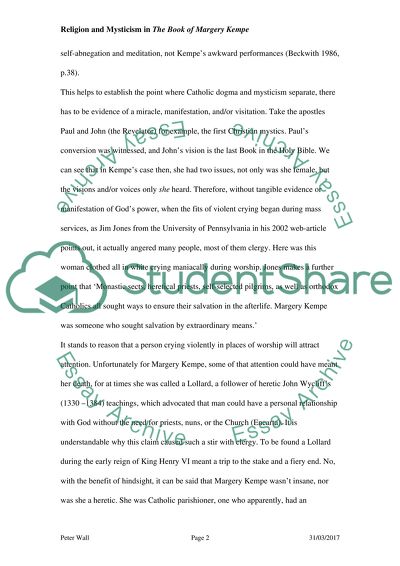Cite this document
(“Religion and Mysticism in the Book of Margery Kempe Report/Review”, n.d.)
Religion and Mysticism in the Book of Margery Kempe Report/Review. Retrieved from https://studentshare.org/miscellaneous/1521733-religion-and-mysticism-in-the-book-of-margery-kempe
Religion and Mysticism in the Book of Margery Kempe Report/Review. Retrieved from https://studentshare.org/miscellaneous/1521733-religion-and-mysticism-in-the-book-of-margery-kempe
(Religion and Mysticism in the Book of Margery Kempe Report/Review)
Religion and Mysticism in the Book of Margery Kempe Report/Review. https://studentshare.org/miscellaneous/1521733-religion-and-mysticism-in-the-book-of-margery-kempe.
Religion and Mysticism in the Book of Margery Kempe Report/Review. https://studentshare.org/miscellaneous/1521733-religion-and-mysticism-in-the-book-of-margery-kempe.
“Religion and Mysticism in the Book of Margery Kempe Report/Review”, n.d. https://studentshare.org/miscellaneous/1521733-religion-and-mysticism-in-the-book-of-margery-kempe.


